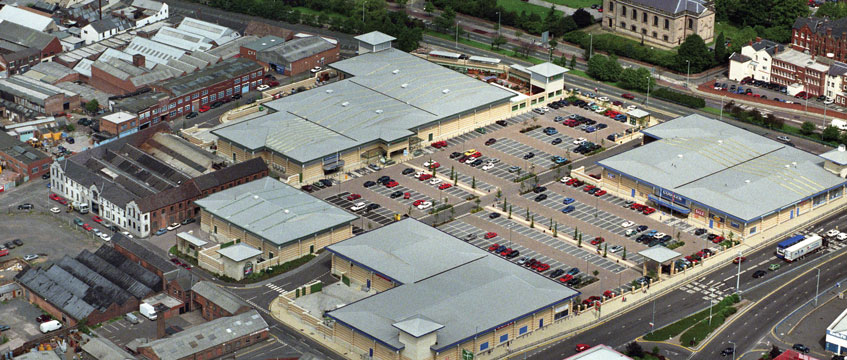Analysts at UBS Asset Management say “green shoots of recovery” in the UK’s retail warehouse market make the sector a worthwhile value play for investors.
In a new paper, Zachary Gauge, UBS Asset Management’s head of real estate research and strategy for Europe, explored where investors can find “value in the market” as concerns rise over the risks of core real estate prices in Europe overheating.
“The UK had seen the sharpest retail correction in Europe, but is now seeing some green shoots of recovery in the retail warehouse sector in parks where the rents are low, and the retail offering suitably matches the needs of the local catchment,” Gauge said.
He added: “Due to working from home, consumers are spending more time near their local retail park than in city centres. Capital values have already increased by 6% in the first eight months of 2021 as the weight of capital seeking high income assets has increased, and investors get comfortable again with this particular retail format.”
European life sciences present a “highly demanded” growth strategy for investors, Gauge added, while student accommodation on the continent offers a “niche sector play” outside of the UK and logistics continues to attract investors taking a development-led approach.
In many of the most in-demand sectors, Gauge said, there are signs that prices could yet overheat.
“At the start of the Covid-19 outbreak, the idea that core European real estate pricing would in many markets be higher in 18 months’ time would have been almost unthinkable,” Gauge said. “But with governments pumping liquidity into the financial system, economies rapidly recovering and interest rates stable at record low levels, that is the situation we find ourselves in. However, as we come out of the pandemic there are still considerable challenges ahead for European real estate.”
Those challenges include the winding down of government support schemes, rising construction costs and the effect of big changes in the occupier markets. “With core property yields at record low levels, we need to ask if those risks are being accurately priced in or whether a bubble is forming due to the surplus liquidity chasing the market,” Gauge said.
Rapid price inflation is evident across Europe, Gauge said, with life sciences asset prices soaring, industrial capital values up by 13% since the end of 2019 and prime PRS yields now as low as 2.1% in Germany. He noted that even the offices sector, “which is facing rising vacancy rates as a major structural shakeup takes effect”, has seen prime values rise by 5% since the pandemic began, with yields in core markets including London, Birmingham and Edinburgh all at or below their pre-pandemic level.
“Despite the vacancy rate rising sharply from 2Q20, prime office yields have continued to move in,” Gauge said. “On the face of it, yields compressing at the same time as a rapid increase in vacancy represents a disconnect between occupier fundamentals and investor sentiment.” He added that a peak in vacancy is likely in late 2022 or 2023.
“The counter-argument is that the market will polarise and occupier demand will continue to be strong for prime space, of which there is a limited supply,” he said. “Although this is true, there are some issues over taking such a polarised view of the market. It implies that prime and non-prime markets will completely disconnect, and the sharp increase in secondary vacancy and rental decline will have no impact on rental levels for prime space. This is a big assumption given that prime and secondary rental values have always been correlated to some extent.”
To send feedback, e-mail tim.burke@eg.co.uk or tweet @_tim_burke or @EGPropertyNews











